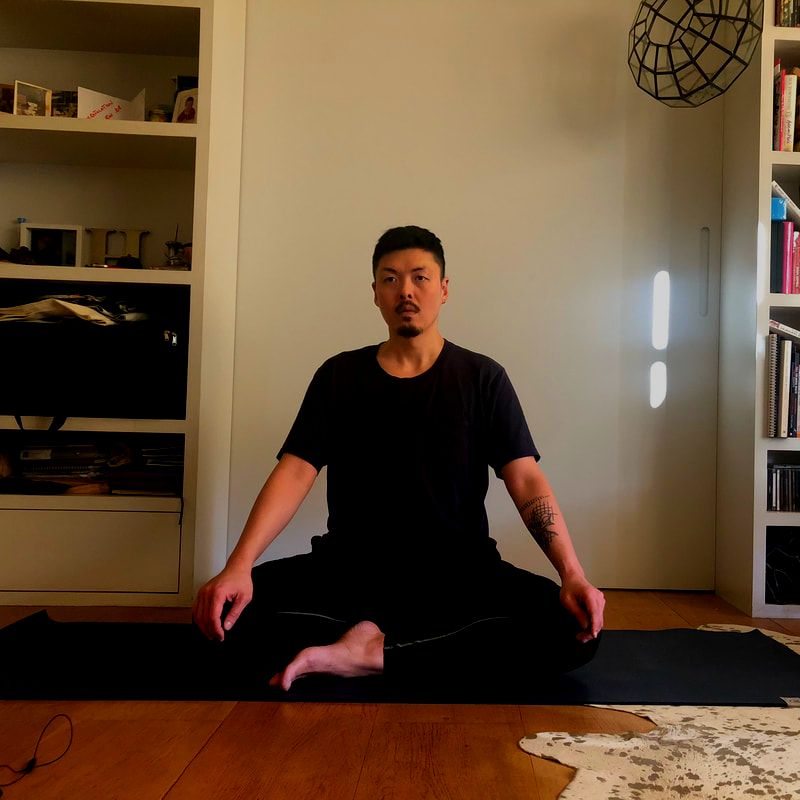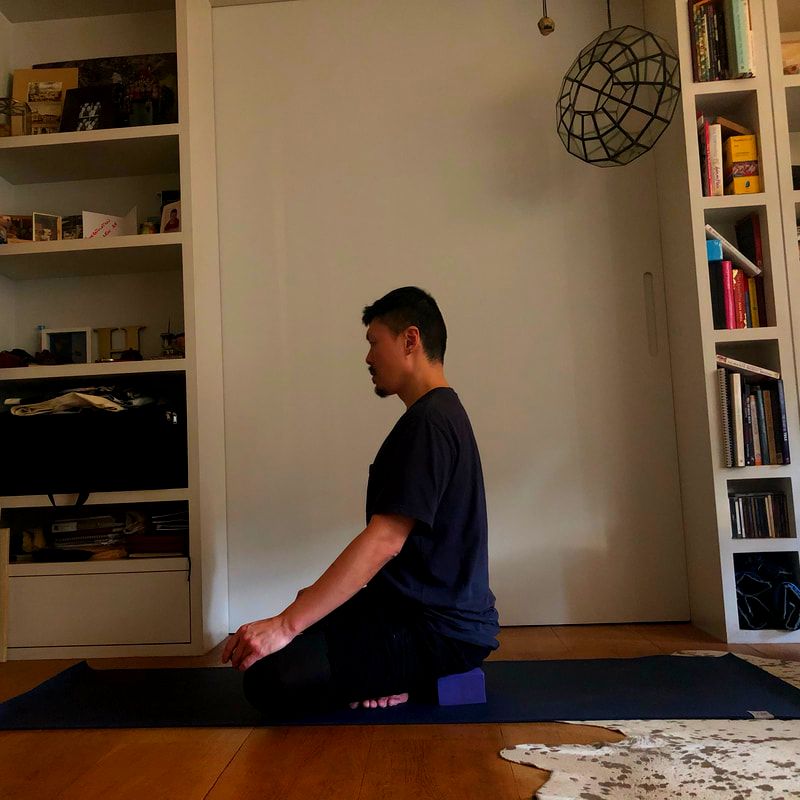|
When we start the class in a Cross-Legged Seated Pose, I would typically spend a few good minutes suggesting the possible ways for one to sit up tall but with ease. This is crucial especially for practices where the body is stationary. Too relaxed and it becomes hard to stay awake, too alert and you may find it hard to internalise the experience. Finding the ideal seat removes the mental distractions caused by discomfort, and that helps you sustain the stillness involved in a pranayama or meditation practice. Tips on Finding Your Seat…
1. Use props - blocks, bricks, books, cushions, pillows... anything to lift the ground to you!!! Unlike in Eastern culture where we commonly sat on the floor so our hips may be more flexible in general; getting into and/or maintaining a cross-legged seat can be difficult for someone from the West who’s more used to sitting on chairs. In spite of this, practitioners often resist the help, choosing instead to bear the discomfort, but in time, the pain ripples through their body from the hip joints and/or lower back, and the agony is displaced to the shoulders or jaw where the tension manifests. Encourage and show them it’s acceptable, wise in fact, to use support. Lead by example, I always sit on a block whether I need to or not; it helps me stay in position for longer and gives permission to the class to find comfort in their seat. 2. Props help with posture & alignment. Sitting higher makes it easier for knees to settle in line or lower that hips so the pelvis feels more spacious. 3. Sit towards the edge of the prop, that way it tilts the pelvis forward slightly, creating space in the hips & helps with sitting up tall. 4. Give the shoulders a little roll up & let them soften down; creating that sense of space across the chest & upper back. 5. Get a feel for your head, perhaps it’s leaning forwards or tilting, so you may want adjust yourself such as drawing the head back or lightly dropping the chin towards the chest so it feels like it’s stacked above the spine. 6. Pay attention to the flow of energy in the body – you might notice a sense of grounding as the shoulders, hips and knees settle towards the earth, whilst on the other hand, feeling the sense of lift that rises from the base of the spine through the crown of your head. *Note: There’s several ways to sit cross-legged - calves across one another (Sukhasana), calves in front of the other (Muktasana), ankles on top of the other (Siddhasana) & calves over the other (Padmasana)... pick the most comfortable rather than most challenging or aesthetically pleasing option!! Remember - finding a seat that allows you to feel alert but relaxed at the same time is key to laying the foundation for your practice.
0 Comments
Leave a Reply. |
Hongyi the yogiFull-time yoga teacher & trainee yoga therapist in London. Eager to share, eager to learn! Archives
July 2021
Categories |



 RSS Feed
RSS Feed
